Abstract
Weanling (23-day-old) rats were fed either on an amino acid-deficient diet (6% of casein, which in effect represents an `amino acid-deficient' diet) or on a diet containing an adequate amount of protein (18% of casein) for 28 days. The hepatic cells from the animals fed on the low-protein diet were characterized by low amino acid content, almost complete inhibition of cell proliferation and a marked decrease in cell volume, protein content and concentration of cytoplasmic RNA compared with cells from control rats. The lower concentration of cytoplasmic RNA was correlated with a decreased ribosomal-RNA content, of which a larger proportion was in the form of free ribosomes. The protein-synthetic competence and messenger-RNA content of isolated ribosomes from liver cells of protein-deprived animals were 40–50% of those noted in controls. At 1hr. after an injection of radioactive uridine, the specific radioactivity of liver total RNA was greater in the group fed on the low-protein diet, but the amount of label that was associated with cytoplasmic RNA or ribosomes was significantly less than that noted in control animals. From these data it was concluded that dietary amino acids regulate hepatic protein synthesis (1) by affecting the ability of polyribosomes to synthesize protein and (2) by influencing the concentration of cytoplasmic ribosomes. It is also tentatively hypothesized that the former process may be directly related to the concentration of cellular free amino acids, whereas the latter could be correlated with the ability of newly synthesized ribosomal sub-units to leave the nucleus.
Full text
PDF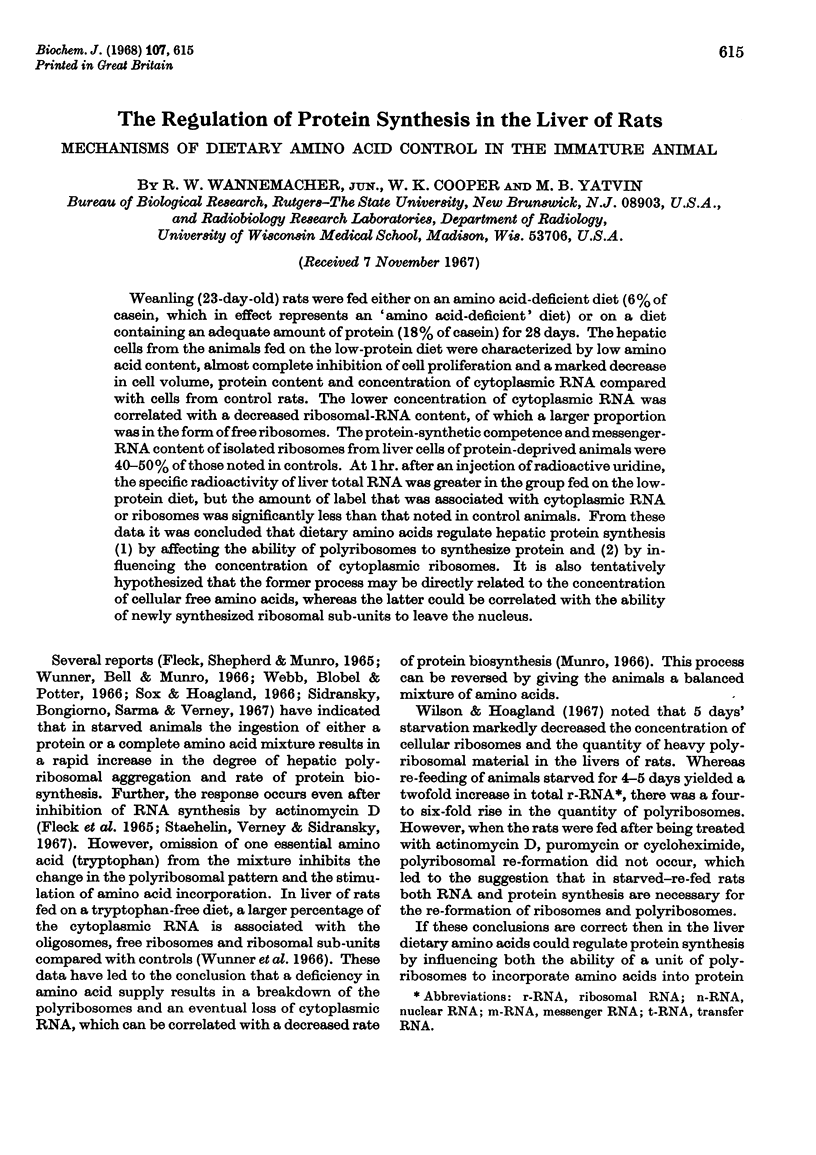
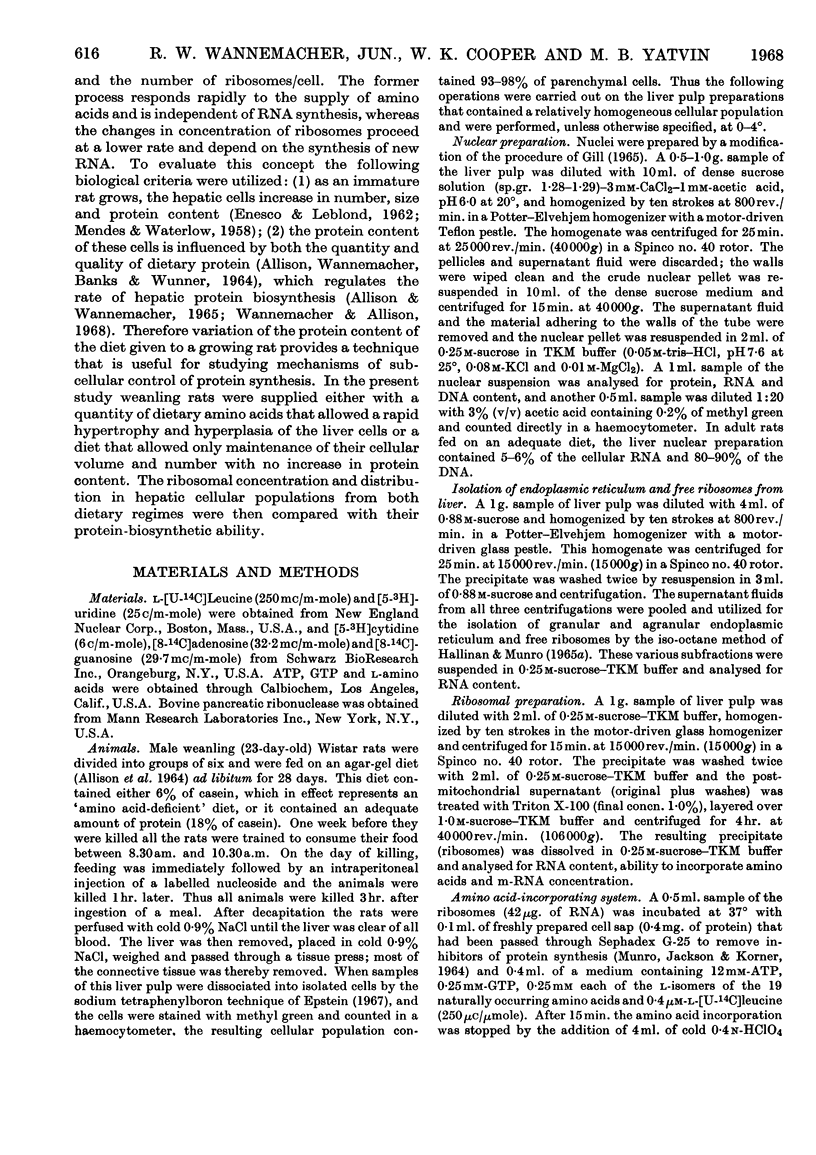
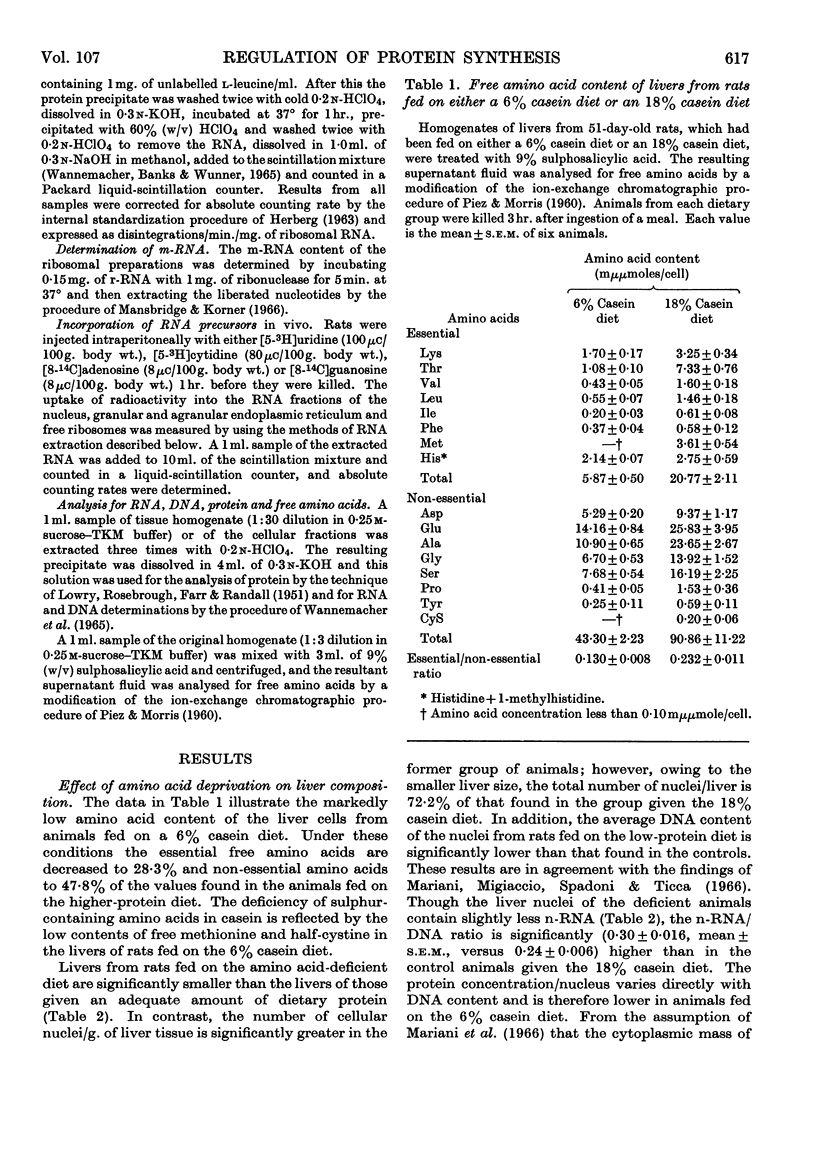
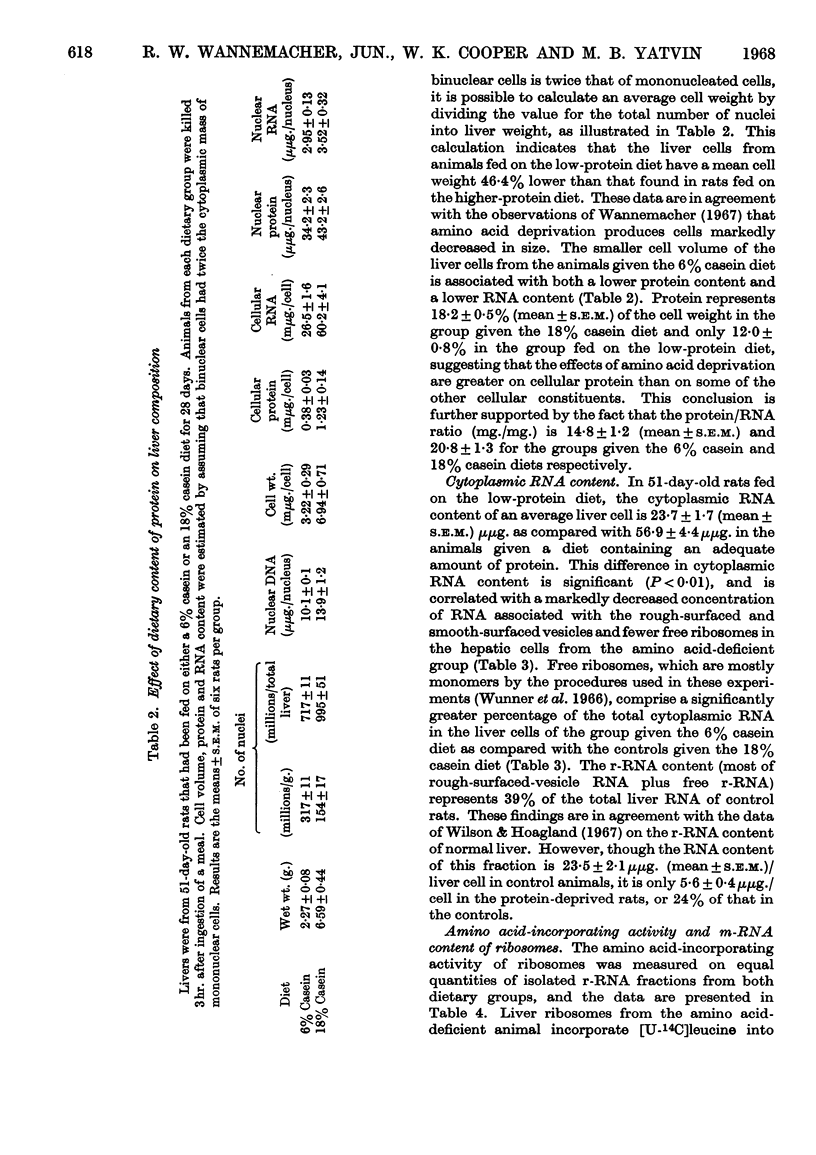
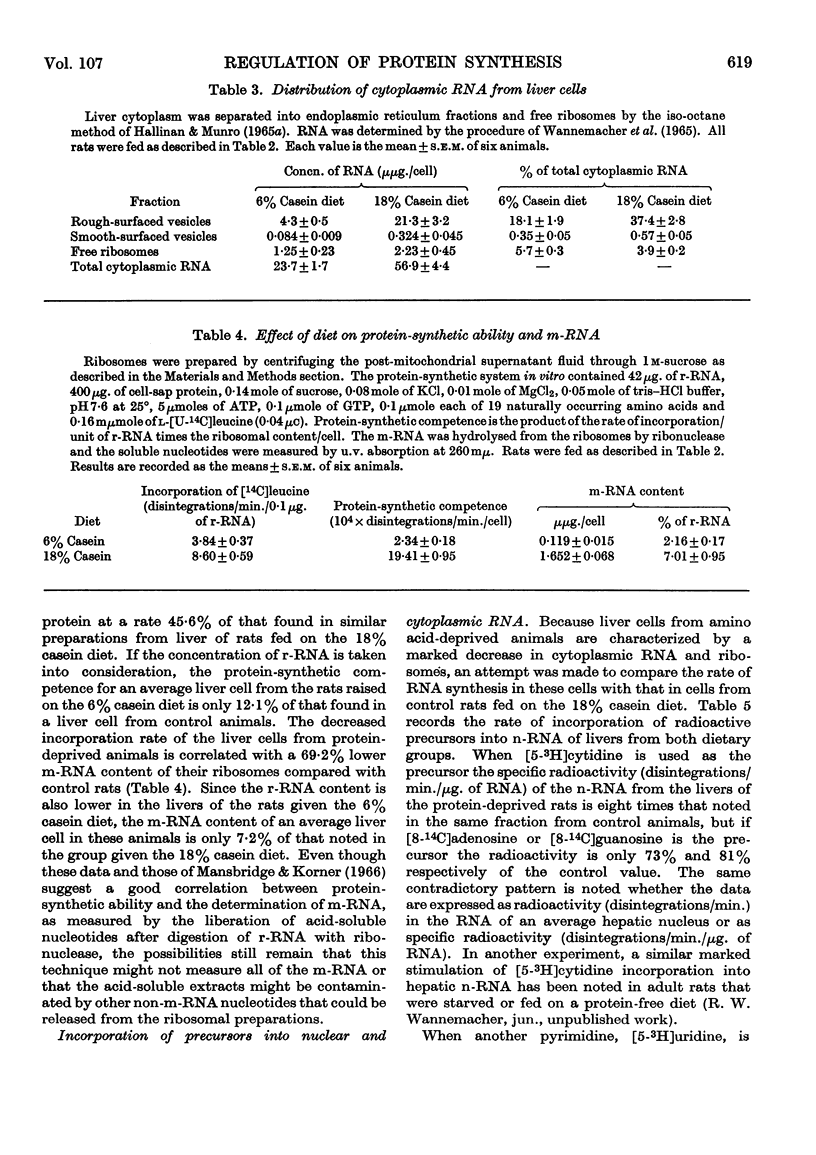
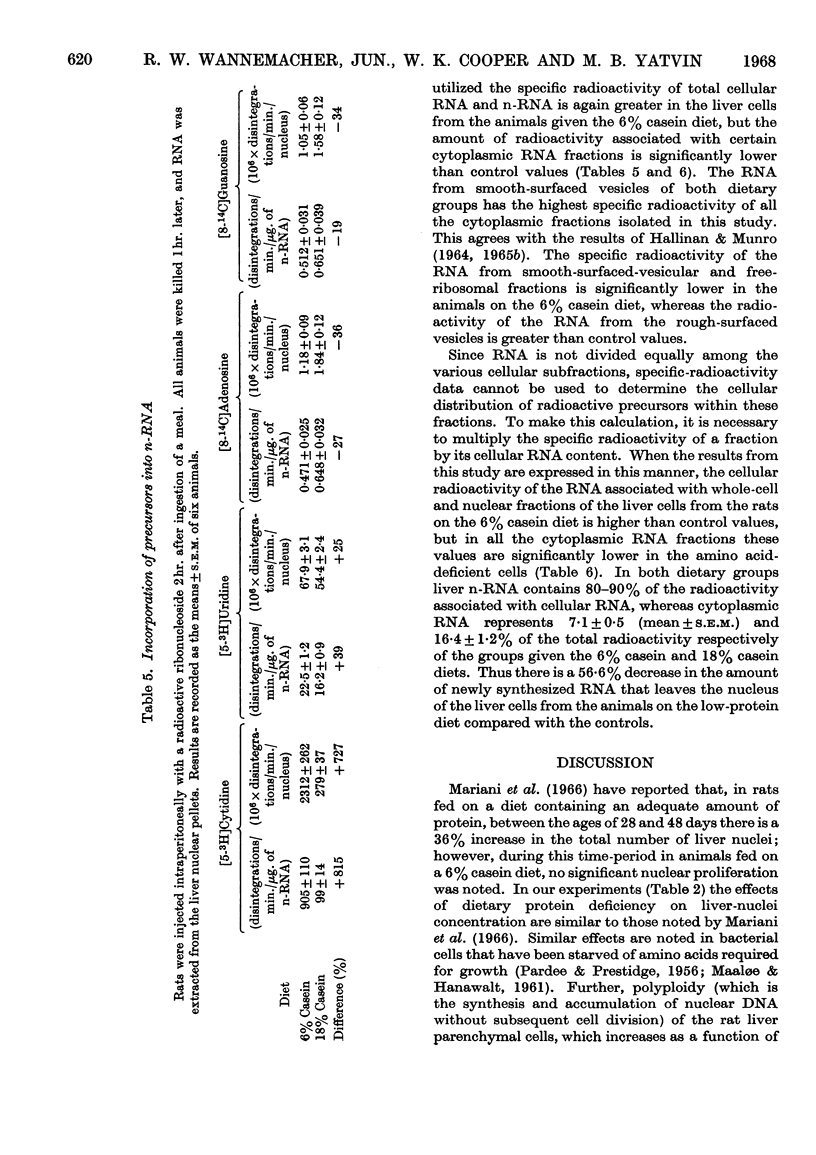
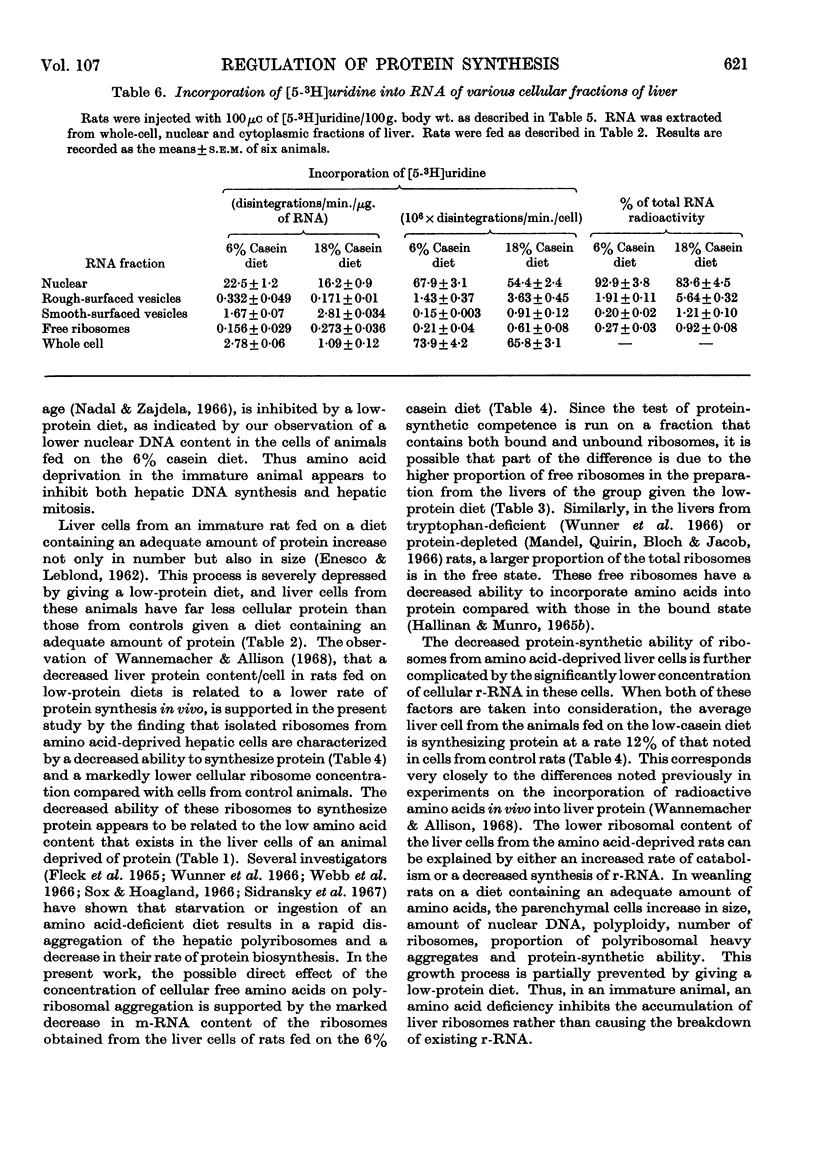
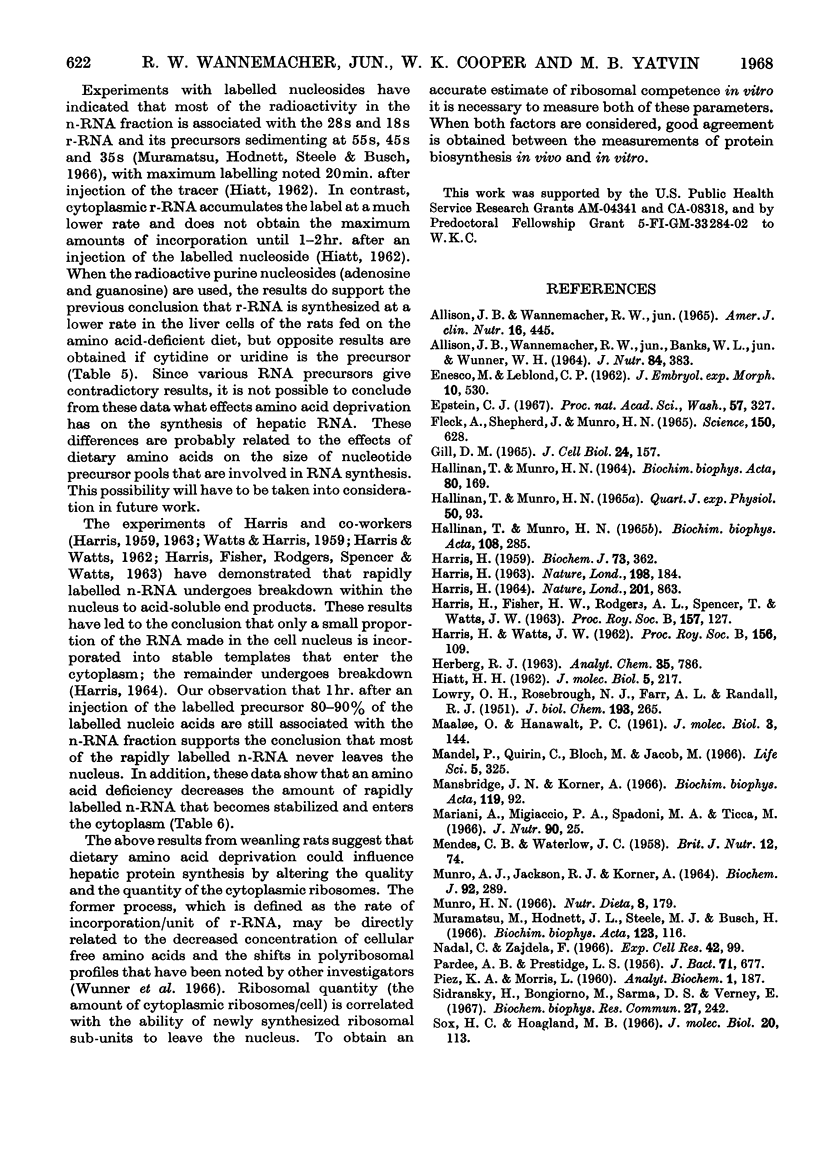

Selected References
These references are in PubMed. This may not be the complete list of references from this article.
- ALLISON J. B., WANNEMACHER R. W., Jr, BANKS W. L., Jr, WUNNER W. H. THE MAGNITUDE AND SIGNIFICANCE OF THE PROTEIN RESERVES IN RATS FED AT VARIOUS LEVELS OF NITROGEN. J Nutr. 1964 Dec;84:383–388. doi: 10.1093/jn/84.4.383. [DOI] [PubMed] [Google Scholar]
- ALLISON J. B., WANNEMACHER R. W., Jr THE CONCEPT AND SIGNIFICANCE OF LABILE AND OVER-ALL PROTEIN RESERVES OF THE BODY. Am J Clin Nutr. 1965 May;16:445–452. doi: 10.1093/ajcn/16.5.445. [DOI] [PubMed] [Google Scholar]
- Fleck A., Shepherd J., Munro H. N. Protein synthesis in rat liver: influence of amino acids in diet on microsomes and polysomes. Science. 1965 Oct 29;150(3696):628–629. doi: 10.1126/science.150.3696.628. [DOI] [PubMed] [Google Scholar]
- GILL D. M. AN IMPROVED METHOD FOR THE ISOLATION OF RAT LIVER NUCLEI BY DENSITY CENTRIFUGATION. J Cell Biol. 1965 Jan;24:157–161. doi: 10.1083/jcb.24.1.157. [DOI] [PMC free article] [PubMed] [Google Scholar]
- HALLINAN T., MUNRO H. N. A RAPID METHOD FOR PREPARING GRANULAR AND AGRANULAR ENDOPLASMIC RETICULUM AND FREE RIBOSOMES FROM RAT LIVER. Q J Exp Physiol Cogn Med Sci. 1965 Jan;50:93–103. doi: 10.1113/expphysiol.1965.sp001774. [DOI] [PubMed] [Google Scholar]
- HARRIS H. FUNCTION OF THE SHORT-LIVED RIBONUCLEIC ACID IN THE CELL NUCLEUS. Nature. 1964 Feb 29;201:863–867. doi: 10.1038/201863a0. [DOI] [PubMed] [Google Scholar]
- HARRIS H. Rapidly labelled ribonucleic acid in the cell nucleus. Nature. 1963 Apr 13;198:184–185. doi: 10.1038/198184a0. [DOI] [PubMed] [Google Scholar]
- HARRIS H. Turnover of nuclear and cytoplasmic ribonucleic acid in two types of animal cell, with some further observations on the nucleolus. Biochem J. 1959 Oct;73:362–369. doi: 10.1042/bj0730362. [DOI] [PMC free article] [PubMed] [Google Scholar]
- HARRIS H., WATTS J. W. The relationship between nuclear and cytoplasmic ribonucleic acid. Proc R Soc Lond B Biol Sci. 1962 May 15;156:109–121. doi: 10.1098/rspb.1962.0031. [DOI] [PubMed] [Google Scholar]
- HIATT H. H. A rapidly labeled RNA in rat liver nuclei. J Mol Biol. 1962 Aug;5:217–229. doi: 10.1016/s0022-2836(62)80085-0. [DOI] [PubMed] [Google Scholar]
- Hallinan T., Munro H. N. Protein synthesis and ribonucleic acid turnover in rat-liver microsome subfractions. Biochim Biophys Acta. 1965 Oct 11;108(2):285–296. doi: 10.1016/0005-2787(65)90013-4. [DOI] [PubMed] [Google Scholar]
- LOWRY O. H., ROSEBROUGH N. J., FARR A. L., RANDALL R. J. Protein measurement with the Folin phenol reagent. J Biol Chem. 1951 Nov;193(1):265–275. [PubMed] [Google Scholar]
- MENDES C. B., WATERLOW J. C. The effect of a low-protein diet, and of refeeding, on the composition of liver and muscle in the weanling rat. Br J Nutr. 1958;12(1):74–88. doi: 10.1079/bjn19580011. [DOI] [PubMed] [Google Scholar]
- Mandel P., Quirin C., Bloch M., Jacob M. The influence of protein intake on RNA and protein synthesis in rat liver. Life Sci. 1966 Feb;5(4):325–330. doi: 10.1016/0024-3205(66)90017-8. [DOI] [PubMed] [Google Scholar]
- Mariani A., Migliaccio P. A., Spadoni M. A., Ticca M. Amino acid activation in the liver of growing rats maintained with normal and with protein-deficient diets. J Nutr. 1966 Sep;90(1):25–30. doi: 10.1093/jn/90.1.25. [DOI] [PubMed] [Google Scholar]
- Munro A. J., Jackson R. J., Korner A. Studies on the nature of polysomes. Biochem J. 1964 Aug;92(2):289–299. doi: 10.1042/bj0920289. [DOI] [PMC free article] [PubMed] [Google Scholar]
- Munro H. N. Relationship between body protein synthesis and protein intake. Nutr Dieta Eur Rev Nutr Diet. 1966;8(3):179–187. doi: 10.1159/000175140. [DOI] [PubMed] [Google Scholar]
- Muramatsu M., Hodnett J. L., Steele W. J., Busch H. Synthesis of 28-S RNA in the nucleolus. Biochim Biophys Acta. 1966 Jul 20;123(1):116–125. doi: 10.1016/0005-2787(66)90164-x. [DOI] [PubMed] [Google Scholar]
- PARDEE A. B., PRESTIDGE L. S. The dependence of nucleic acid synthesis on the presence of amino acids in Escherichia coli. J Bacteriol. 1956 Jun;71(6):677–683. doi: 10.1128/jb.71.6.677-683.1956. [DOI] [PMC free article] [PubMed] [Google Scholar]
- PIEZ K. A., MORRIS L. A modified procedure for the automatic analysis of amino acids. Anal Biochem. 1960 Nov;1:187–201. doi: 10.1016/0003-2697(60)90045-2. [DOI] [PubMed] [Google Scholar]
- Sidransky H., Bongiorno M., Sarma D. S., Verney E. The influence of tryptophan on hepatic polyribosomes and protein synthesis in fasted mice. Biochem Biophys Res Commun. 1967 Apr 20;27(2):242–248. doi: 10.1016/s0006-291x(67)80068-8. [DOI] [PubMed] [Google Scholar]
- Staehelin T., Verney E., Sidransky H. The influence of nutritional change on polyribosomes of the liver. Biochim Biophys Acta. 1967 Aug 22;145(1):105–119. doi: 10.1016/0005-2787(67)90659-4. [DOI] [PubMed] [Google Scholar]
- WATTS J. W., HARRIS H. Turnover of nucleic acids in a non-multiplying animal cell. Biochem J. 1959 May;72(1):147–153. doi: 10.1042/bj0720147. [DOI] [PMC free article] [PubMed] [Google Scholar]
- Wannemacher R. W., Jr, Banks W. L., Jr, Wunner W. H. Use of a single tissue extract to determine cellular protein and nucleic acid concentrations and rate of amino acid incorporation. Anal Biochem. 1965 May;11(2):320–326. doi: 10.1016/0003-2697(65)90020-5. [DOI] [PubMed] [Google Scholar]
- Webb T. E., Blobel G., Potter V. R. Polyribosomes in rat tissues. 3. The response of the polyribosome pattern of rat liver to physiologic stress. Cancer Res. 1966 Feb;26(2):253–257. [PubMed] [Google Scholar]
- Wilson S. H., Hoagland M. B. Physiology of rat-liver polysomes. The stability of messenger ribonucleic acid and ribosomes. Biochem J. 1967 May;103(2):556–566. doi: 10.1042/bj1030556. [DOI] [PMC free article] [PubMed] [Google Scholar]
- Wunner W. H., Bell J., Munro H. N. The effect of feeding with a tryptophan-free amino acid mixture on rat-liver polysomes and ribosomal ribonucleic acid. Biochem J. 1966 Nov;101(2):417–428. doi: 10.1042/bj1010417. [DOI] [PMC free article] [PubMed] [Google Scholar]


